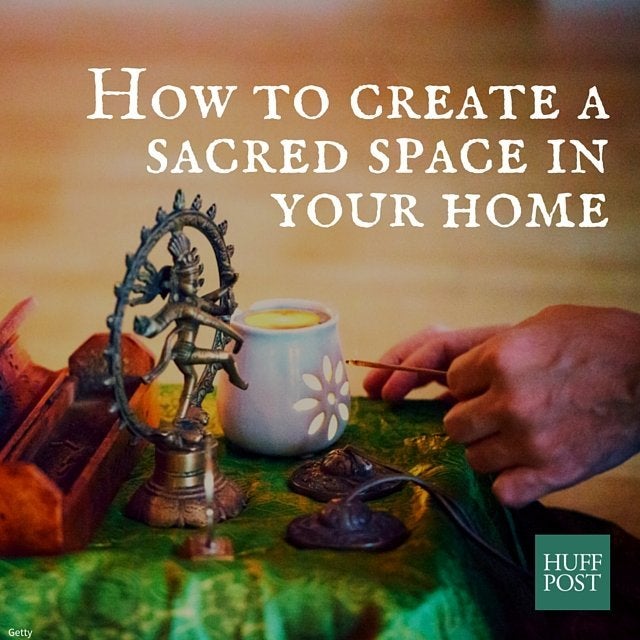
getty
Whether you're religious, non-religious, or anything in between, a sacred space can help you pause, unplug, and reflect on the only work that really matters: loving the world, practicing gratitude, and being kind to yourself.
Having a designated space in your home for prayer, meditation, or private reflection can be a constant reminder of how important it is to cultivate this sense of awe and wonder in your life.
Advertisement
HuffPost Religion asked a few experts for tips on how to create a special area for meditation and spirituality in the tiniest of homes and on a tight budget. Even if you only get a few minutes to spend there in a day, we hope this helps guide you towards incorporating more mindfulness into your life.
Spend some time thinking about what makes a space sacred for you.
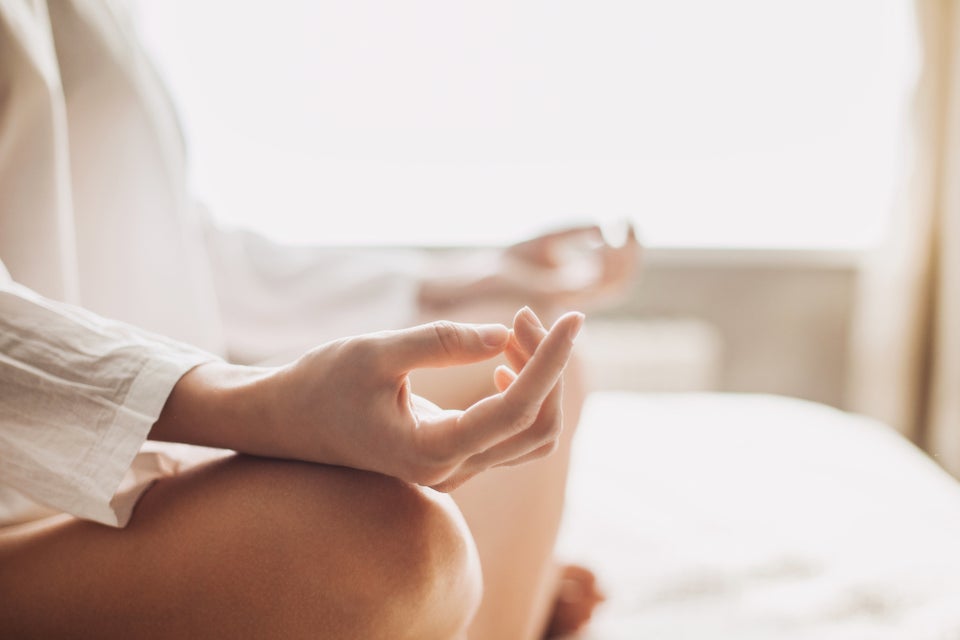
Poike via Getty Images
It can be useful to set an intention before creating your space. What are you seeking to add to your life by setting this space apart in your home? What do you hope to do in this space? Are there any deities you'd like to honor here? Is it something you see yourself using everyday, or just on important holy days, anniversaries, or seasons?
For Rosetta Thurman, a personal development coach and founder of the Happy Black Woman blog, a sacred space or altar acts as a "spiritual center" where she can focus on being her "highest self."
Sarah Starr, a writer and life coach, believes setting apart a space for rituals and meditation is an act that invites people to make "mental, emotional, and energetic space" for these practices, as well. A space also serves as an daily reminder to connect with yourself and with the divine.
"Whenever you walk past it you'll feel that call and commitment to do the work you're showing up every day to do," she wrote on her blog.
It's also worth thinking about who you want to share the space with. Will your partner be involved in creating this space? Will he or she be allowed to add to it or use it when you aren't present? If you're going to have children participate in your rituals, how can you make the space safe for them? Have these conversations with your loved ones so that they also know what your expectations are.
For Rosetta Thurman, a personal development coach and founder of the Happy Black Woman blog, a sacred space or altar acts as a "spiritual center" where she can focus on being her "highest self."
Sarah Starr, a writer and life coach, believes setting apart a space for rituals and meditation is an act that invites people to make "mental, emotional, and energetic space" for these practices, as well. A space also serves as an daily reminder to connect with yourself and with the divine.
"Whenever you walk past it you'll feel that call and commitment to do the work you're showing up every day to do," she wrote on her blog.
It's also worth thinking about who you want to share the space with. Will your partner be involved in creating this space? Will he or she be allowed to add to it or use it when you aren't present? If you're going to have children participate in your rituals, how can you make the space safe for them? Have these conversations with your loved ones so that they also know what your expectations are.
Get creative about finding a space to call sacred.
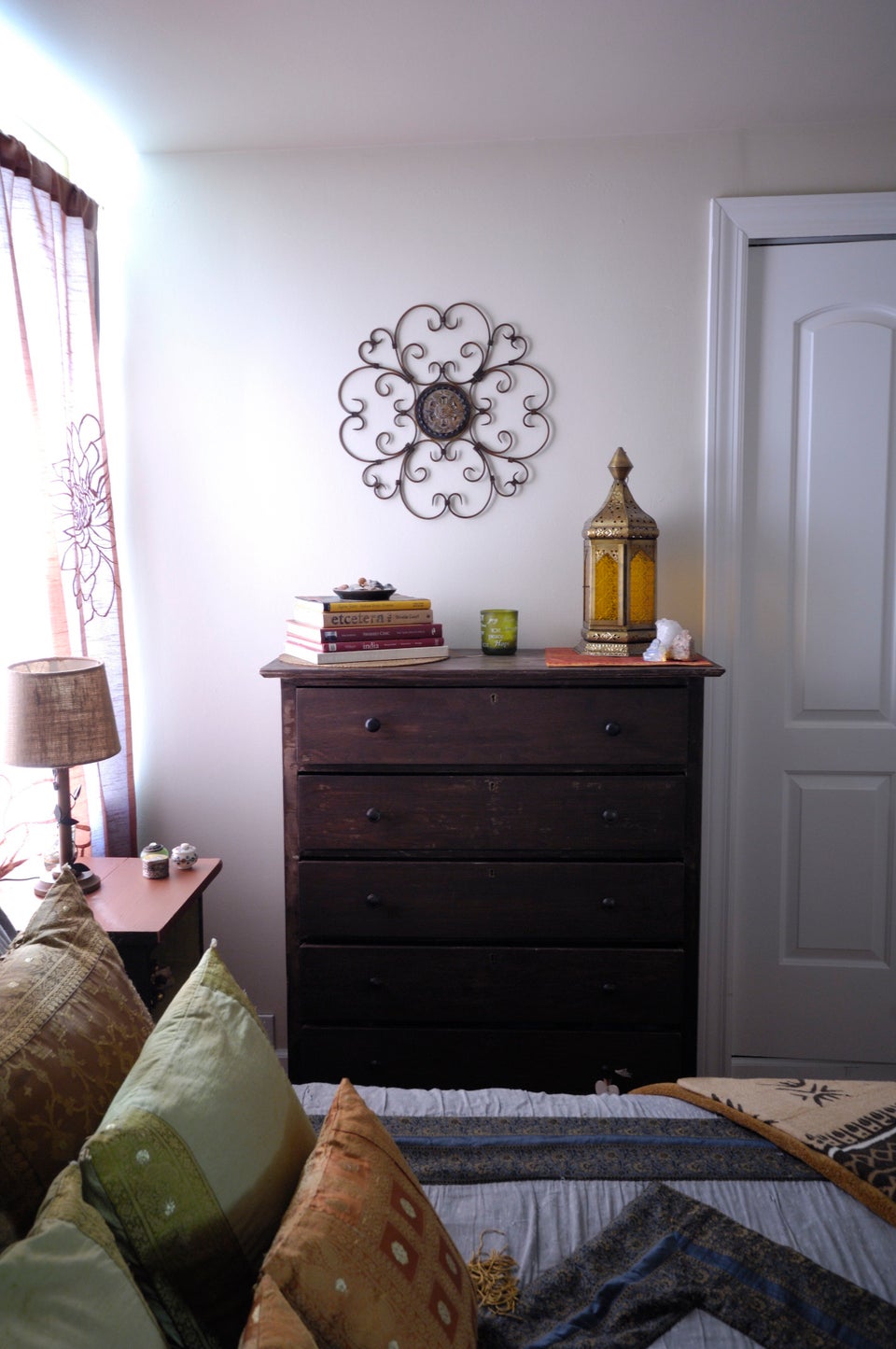
Jill Angelo
The next step is to find a peaceful and uncluttered area in your home. Jayme Barrett, author of “Feng Shui Your Life” believes sacred spaces should be places that allow you to relax and unwind, where you won't be startled by someone entering or exiting a room.
"It should be a space that is quiet, separated from where you work or pay bills, away from the kids rooms or areas with a lot of traffic and a spot that feels comfortable and protected," Barrett told The Huffington Post in an email. "It’s not easy to relax and close your eyes if you’re nervous that a family member will come from behind to surprise you."
If free space in your home is limited, get creative. Search for corners of your house that aren't being used. Add a billowy curtain or a screen to a corner that you can tuck away when the space isn't in use. Look for a closet floor, bookshelf, windowsill, or the top of a dresser that you can easily clear out. You could create a portable sacred space by filling a box with objects that are meaningful to you. A sacred space can also be as simple as your favorite chair or a pillow.
"Buy one beautiful pillow that you sit on each time you meditate or get quiet," Barrett wrote. "Wherever you place that pillow, whether on the floor, a chair, the sofa or your bed will become your sacred space."
"It should be a space that is quiet, separated from where you work or pay bills, away from the kids rooms or areas with a lot of traffic and a spot that feels comfortable and protected," Barrett told The Huffington Post in an email. "It’s not easy to relax and close your eyes if you’re nervous that a family member will come from behind to surprise you."
If free space in your home is limited, get creative. Search for corners of your house that aren't being used. Add a billowy curtain or a screen to a corner that you can tuck away when the space isn't in use. Look for a closet floor, bookshelf, windowsill, or the top of a dresser that you can easily clear out. You could create a portable sacred space by filling a box with objects that are meaningful to you. A sacred space can also be as simple as your favorite chair or a pillow.
"Buy one beautiful pillow that you sit on each time you meditate or get quiet," Barrett wrote. "Wherever you place that pillow, whether on the floor, a chair, the sofa or your bed will become your sacred space."
Fill your space with meaningful items.
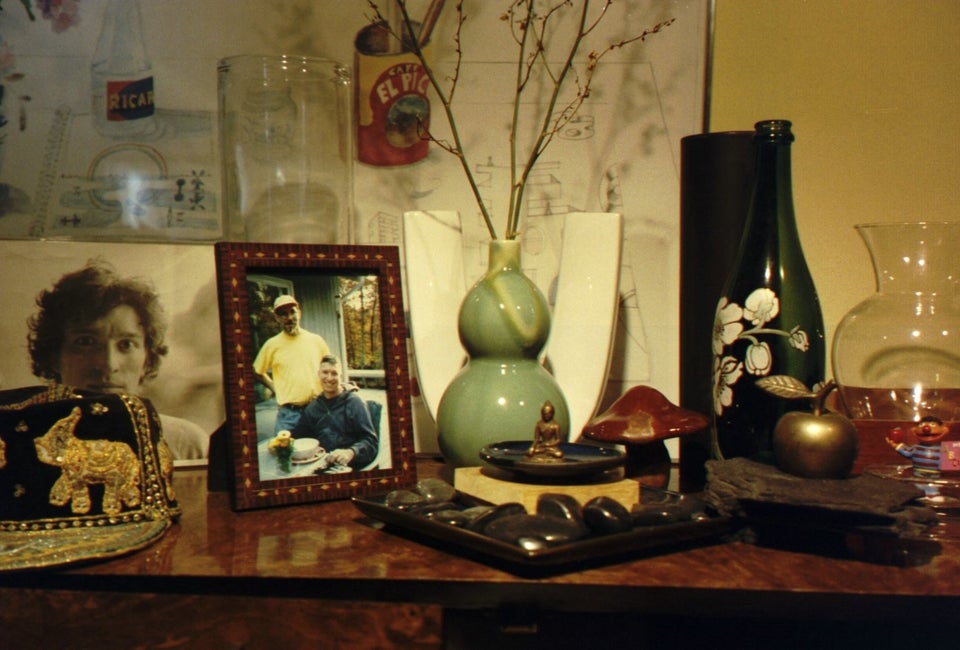
The items you place in your space don't have to be elaborate or expensive. Oprah Winfrey's meditation space has just three candles and a few inspirational books.
Jill Angelo, author of "Sacred Space: Turning Your Home Into a Sanctuary," challenges her clients to use items that are already present in their houses before going out to buy anything more.
"We already have meaningful items present in our home," Angelo told The Huffington Post in an email. "Go on a treasure hunt through drawers, closets –even boxes under the bed will contain special objects to be used."
Use all of your senses -- think of things that you'll love to touch, hear, smell, taste. Arranging the items in a symmetrical way will ensure that the space is pleasing to the eye.
If you're using an altar or some kind of elevated space, you can drape it with colorful fabrics that change to reflect the season, or the liturgical calendar.
Here are some other ideas for what to place in your space: a vision board, postcards, travel souvenirs, plants, devotional statues, divination tools, religious books, prayer beads, incense, bells and essential oils. You could also incorporate a journal into the space, or keep a running list of desires and blessings.
Jill Angelo, author of "Sacred Space: Turning Your Home Into a Sanctuary," challenges her clients to use items that are already present in their houses before going out to buy anything more.
"We already have meaningful items present in our home," Angelo told The Huffington Post in an email. "Go on a treasure hunt through drawers, closets –even boxes under the bed will contain special objects to be used."
Use all of your senses -- think of things that you'll love to touch, hear, smell, taste. Arranging the items in a symmetrical way will ensure that the space is pleasing to the eye.
If you're using an altar or some kind of elevated space, you can drape it with colorful fabrics that change to reflect the season, or the liturgical calendar.
Here are some other ideas for what to place in your space: a vision board, postcards, travel souvenirs, plants, devotional statues, divination tools, religious books, prayer beads, incense, bells and essential oils. You could also incorporate a journal into the space, or keep a running list of desires and blessings.
Advertisement
Have a special ceremony to inaugurate the space.

Noe Montes via Getty Images
When you feel ready, you can take some time to set a positive intention for the space that you've marked out. Angelo suggests using a favorite meditation, mantra or prayer. You could also spend some time reflecting on the meaning of each of the sacred objects in your space.
"Invoke the sacred by lighting a candle with intention and reverence," Angelo wrote. "Play favorite music or chants. Breathe deeply -- releasing the stresses of the day and replenishing your spirit."
In Native American spiritual traditions, a smudging ceremony is used to clear a space of lingering energy and dedicate it for a new purpose. During this ritual, people burn sage or another sacred plant, sometimes inside an abalone shell or a clay bowl. They then let the smoke from the plant waft over their bodies, before directing it throughout the room.
"Invoke the sacred by lighting a candle with intention and reverence," Angelo wrote. "Play favorite music or chants. Breathe deeply -- releasing the stresses of the day and replenishing your spirit."
In Native American spiritual traditions, a smudging ceremony is used to clear a space of lingering energy and dedicate it for a new purpose. During this ritual, people burn sage or another sacred plant, sometimes inside an abalone shell or a clay bowl. They then let the smoke from the plant waft over their bodies, before directing it throughout the room.
Make this a place of ritual and reflection, and allow it to change over time.
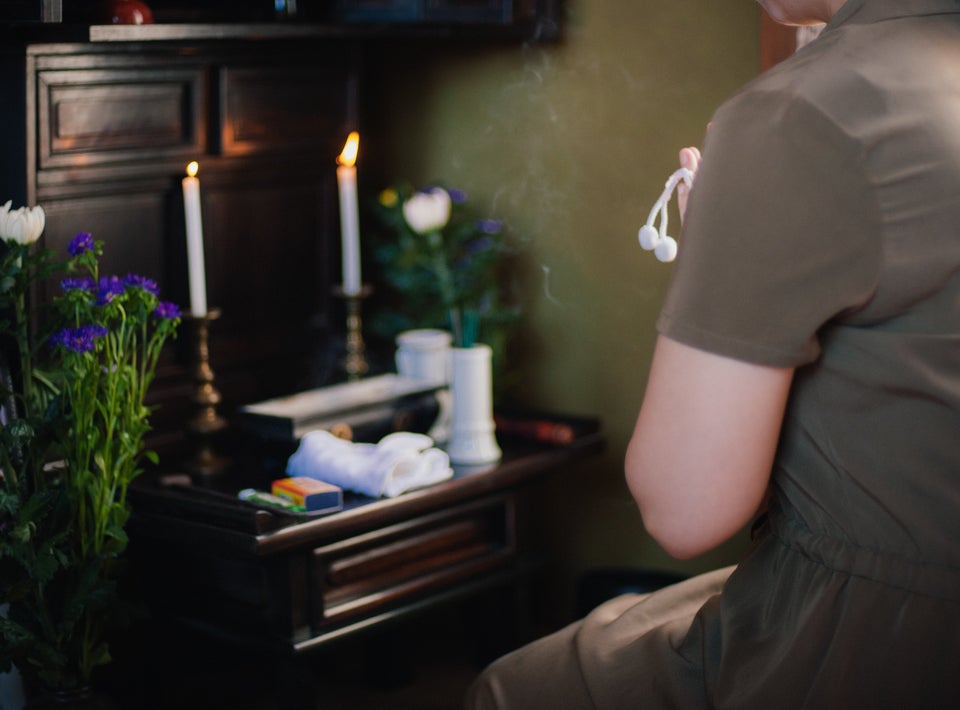
Getty Images/Moment Open
Try to spend time in your space every day -- whether it's for 10 seconds before you rush out the door in the morning, or for a relaxed 20 minute evening meditation.
Sherri Silverman, a sacred space consultant who specializes in Vastu, an ancient Indian system of architecture and design, suggests taking off your shoes when you enter your sanctuary.
"This keeps the dirt and stress of the everyday world outside of your space, setting it apart as quieter, cleaner, more sacred, and more peaceful," Silverman told The Huffington Post. "It will help delineate it as separate and honored."
Allow your space to evolve over time. Find more things to place in it and clear out items that aren't as useful to you anymore. Create new rituals and intentions for it as your own spiritual practice grows.
Sherri Silverman, a sacred space consultant who specializes in Vastu, an ancient Indian system of architecture and design, suggests taking off your shoes when you enter your sanctuary.
"This keeps the dirt and stress of the everyday world outside of your space, setting it apart as quieter, cleaner, more sacred, and more peaceful," Silverman told The Huffington Post. "It will help delineate it as separate and honored."
Allow your space to evolve over time. Find more things to place in it and clear out items that aren't as useful to you anymore. Create new rituals and intentions for it as your own spiritual practice grows.
